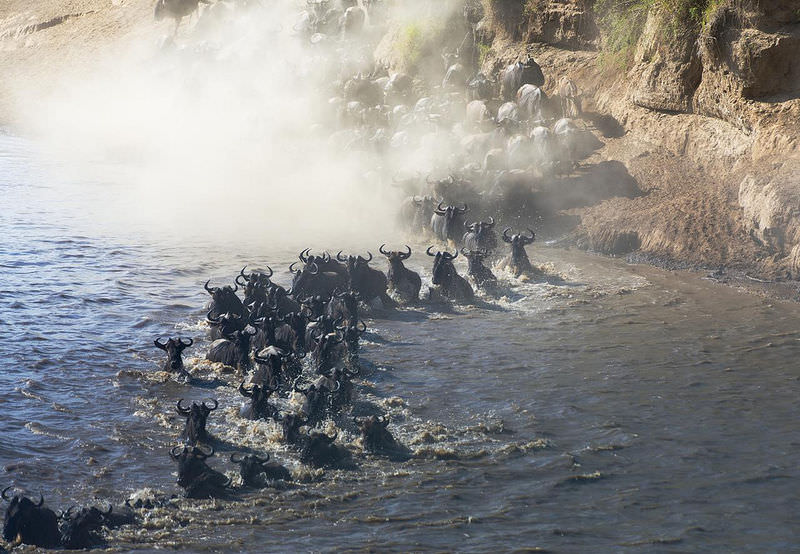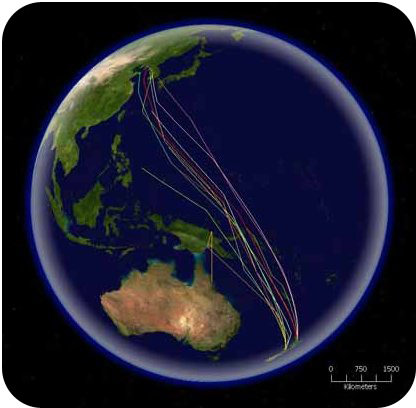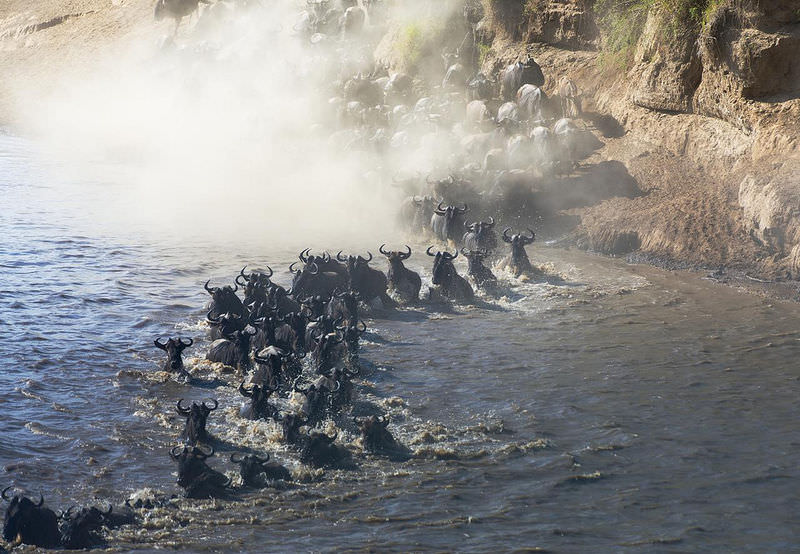10.7: Cyclic Behavior
- Page ID
- 12245
\( \newcommand{\vecs}[1]{\overset { \scriptstyle \rightharpoonup} {\mathbf{#1}} } \)
\( \newcommand{\vecd}[1]{\overset{-\!-\!\rightharpoonup}{\vphantom{a}\smash {#1}}} \)
\( \newcommand{\dsum}{\displaystyle\sum\limits} \)
\( \newcommand{\dint}{\displaystyle\int\limits} \)
\( \newcommand{\dlim}{\displaystyle\lim\limits} \)
\( \newcommand{\id}{\mathrm{id}}\) \( \newcommand{\Span}{\mathrm{span}}\)
( \newcommand{\kernel}{\mathrm{null}\,}\) \( \newcommand{\range}{\mathrm{range}\,}\)
\( \newcommand{\RealPart}{\mathrm{Re}}\) \( \newcommand{\ImaginaryPart}{\mathrm{Im}}\)
\( \newcommand{\Argument}{\mathrm{Arg}}\) \( \newcommand{\norm}[1]{\| #1 \|}\)
\( \newcommand{\inner}[2]{\langle #1, #2 \rangle}\)
\( \newcommand{\Span}{\mathrm{span}}\)
\( \newcommand{\id}{\mathrm{id}}\)
\( \newcommand{\Span}{\mathrm{span}}\)
\( \newcommand{\kernel}{\mathrm{null}\,}\)
\( \newcommand{\range}{\mathrm{range}\,}\)
\( \newcommand{\RealPart}{\mathrm{Re}}\)
\( \newcommand{\ImaginaryPart}{\mathrm{Im}}\)
\( \newcommand{\Argument}{\mathrm{Arg}}\)
\( \newcommand{\norm}[1]{\| #1 \|}\)
\( \newcommand{\inner}[2]{\langle #1, #2 \rangle}\)
\( \newcommand{\Span}{\mathrm{span}}\) \( \newcommand{\AA}{\unicode[.8,0]{x212B}}\)
\( \newcommand{\vectorA}[1]{\vec{#1}} % arrow\)
\( \newcommand{\vectorAt}[1]{\vec{\text{#1}}} % arrow\)
\( \newcommand{\vectorB}[1]{\overset { \scriptstyle \rightharpoonup} {\mathbf{#1}} } \)
\( \newcommand{\vectorC}[1]{\textbf{#1}} \)
\( \newcommand{\vectorD}[1]{\overrightarrow{#1}} \)
\( \newcommand{\vectorDt}[1]{\overrightarrow{\text{#1}}} \)
\( \newcommand{\vectE}[1]{\overset{-\!-\!\rightharpoonup}{\vphantom{a}\smash{\mathbf {#1}}}} \)
\( \newcommand{\vecs}[1]{\overset { \scriptstyle \rightharpoonup} {\mathbf{#1}} } \)
\( \newcommand{\vecd}[1]{\overset{-\!-\!\rightharpoonup}{\vphantom{a}\smash {#1}}} \)
\(\newcommand{\avec}{\mathbf a}\) \(\newcommand{\bvec}{\mathbf b}\) \(\newcommand{\cvec}{\mathbf c}\) \(\newcommand{\dvec}{\mathbf d}\) \(\newcommand{\dtil}{\widetilde{\mathbf d}}\) \(\newcommand{\evec}{\mathbf e}\) \(\newcommand{\fvec}{\mathbf f}\) \(\newcommand{\nvec}{\mathbf n}\) \(\newcommand{\pvec}{\mathbf p}\) \(\newcommand{\qvec}{\mathbf q}\) \(\newcommand{\svec}{\mathbf s}\) \(\newcommand{\tvec}{\mathbf t}\) \(\newcommand{\uvec}{\mathbf u}\) \(\newcommand{\vvec}{\mathbf v}\) \(\newcommand{\wvec}{\mathbf w}\) \(\newcommand{\xvec}{\mathbf x}\) \(\newcommand{\yvec}{\mathbf y}\) \(\newcommand{\zvec}{\mathbf z}\) \(\newcommand{\rvec}{\mathbf r}\) \(\newcommand{\mvec}{\mathbf m}\) \(\newcommand{\zerovec}{\mathbf 0}\) \(\newcommand{\onevec}{\mathbf 1}\) \(\newcommand{\real}{\mathbb R}\) \(\newcommand{\twovec}[2]{\left[\begin{array}{r}#1 \\ #2 \end{array}\right]}\) \(\newcommand{\ctwovec}[2]{\left[\begin{array}{c}#1 \\ #2 \end{array}\right]}\) \(\newcommand{\threevec}[3]{\left[\begin{array}{r}#1 \\ #2 \\ #3 \end{array}\right]}\) \(\newcommand{\cthreevec}[3]{\left[\begin{array}{c}#1 \\ #2 \\ #3 \end{array}\right]}\) \(\newcommand{\fourvec}[4]{\left[\begin{array}{r}#1 \\ #2 \\ #3 \\ #4 \end{array}\right]}\) \(\newcommand{\cfourvec}[4]{\left[\begin{array}{c}#1 \\ #2 \\ #3 \\ #4 \end{array}\right]}\) \(\newcommand{\fivevec}[5]{\left[\begin{array}{r}#1 \\ #2 \\ #3 \\ #4 \\ #5 \\ \end{array}\right]}\) \(\newcommand{\cfivevec}[5]{\left[\begin{array}{c}#1 \\ #2 \\ #3 \\ #4 \\ #5 \\ \end{array}\right]}\) \(\newcommand{\mattwo}[4]{\left[\begin{array}{rr}#1 \amp #2 \\ #3 \amp #4 \\ \end{array}\right]}\) \(\newcommand{\laspan}[1]{\text{Span}\{#1\}}\) \(\newcommand{\bcal}{\cal B}\) \(\newcommand{\ccal}{\cal C}\) \(\newcommand{\scal}{\cal S}\) \(\newcommand{\wcal}{\cal W}\) \(\newcommand{\ecal}{\cal E}\) \(\newcommand{\coords}[2]{\left\{#1\right\}_{#2}}\) \(\newcommand{\gray}[1]{\color{gray}{#1}}\) \(\newcommand{\lgray}[1]{\color{lightgray}{#1}}\) \(\newcommand{\rank}{\operatorname{rank}}\) \(\newcommand{\row}{\text{Row}}\) \(\newcommand{\col}{\text{Col}}\) \(\renewcommand{\row}{\text{Row}}\) \(\newcommand{\nul}{\text{Nul}}\) \(\newcommand{\var}{\text{Var}}\) \(\newcommand{\corr}{\text{corr}}\) \(\newcommand{\len}[1]{\left|#1\right|}\) \(\newcommand{\bbar}{\overline{\bvec}}\) \(\newcommand{\bhat}{\widehat{\bvec}}\) \(\newcommand{\bperp}{\bvec^\perp}\) \(\newcommand{\xhat}{\widehat{\xvec}}\) \(\newcommand{\vhat}{\widehat{\vvec}}\) \(\newcommand{\uhat}{\widehat{\uvec}}\) \(\newcommand{\what}{\widehat{\wvec}}\) \(\newcommand{\Sighat}{\widehat{\Sigma}}\) \(\newcommand{\lt}{<}\) \(\newcommand{\gt}{>}\) \(\newcommand{\amp}{&}\) \(\definecolor{fillinmathshade}{gray}{0.9}\)
The seventh greatest wonder in the world. Really?
The Masai Mara Wildebeest Migration. The annual wildebeest migration in Kenya and Tanzania is arguably the most spectacular natural event in Africa. More than 3 million large mammals have made the vast Masai Mara and Serengeti plains their home, and each summer they migrate, looking for greener pastures. And yes, some call it "the seventh greatest wonder in the world."
Cyclic Behaviors
Many animal behaviors occur in a regular cycle. Two types of cyclic behaviors are circadian rhythms and migration.
Circadian rhythms are regular changes in biology or behavior that occur in a 24-hour cycle. In humans, for example, blood pressure and body temperature change in a regular way throughout each 24-hour day. Animals may eat and drink at certain times of day as well. Humans have daily cycles of behavior, too. Most people start to get sleepy after dark and have a hard time sleeping when it is light outside. In many species, including humans, circadian rhythms are controlled by a tiny structure called the biological clock. This structure is located in a gland at the base of the brain. The biological clock sends signals to the body. The signals cause regular changes in behavior and body processes. The amount of light entering the eyes helps control the biological clock. The clock causes changes that repeat every 24 hours.
Migration refers to seasonal movements of animals from one area to another. Migrants typically travel long distances, and travel the same paths each seasonal cycle. Usually, the migrants move to another area in order to find food or mates. Many birds, fish, and insects migrate. Mammals such as whales and caribou migrate as well. Figure below shows the migration route of a bird called a godwit. Another example of a behavior with a yearly cycle is hibernation. Hibernation is a state in which an animal’s body processes are slower than usual, and its body temperature falls. An animal uses less energy than usual during hibernation. This helps the animal survive during a time of year when food is scarce. Hibernation may last for weeks or months. Animals that hibernate include species of bats, squirrels, and snakes. Most people think that bears hibernate. In fact, bears do not go into true hibernation. In the winter, they go into a deep sleep. However, their body processes do not slow down very much. Their body temperature also remains about the same as usual. Bears can be awakened easily from their winter sleep.
 Godwit Migration Route. Godwits make this incredibly long journey twice a year. In the fall, they migrate from the Arctic to Antarctica. They make the return flight in the spring.
Godwit Migration Route. Godwits make this incredibly long journey twice a year. In the fall, they migrate from the Arctic to Antarctica. They make the return flight in the spring.KQED: Flyways: The Migratory Routes of Birds
For thousands of years and countless generations, migratory birds have flown the same long-distance paths between their breeding and feeding grounds. Understanding the routes these birds take, called flyways, helps conservation efforts and gives scientists better knowledge of global changes, both natural and man-made.
Summary
- Types of animal behavior include cyclic behaviors such as circadian rhythms and migration.
Review
- What are circadian rhythms? Give an example.
- Why is migration considered a cyclic behavior?
| Image | Reference | Attributions |
 |
[Figure 1] | Credit: Courtesy of US Geological Survey Alaska Science Center Source: commons.wikimedia.org/wiki/File:Bar-tailed_Godwit_migration.jpg License: Public Domain |
 |
[Figure 2] | Credit: Courtesy of US Geological Survey Alaska Science Center Source: commons.wikimedia.org/wiki/File:Bar-tailed_Godwit_migration.jpg License: Public Domain |

